- Last week, cryptoassets continued to underperform on account of heightened risk aversion due to ongoing US recession woes.
- Our in-house “Cryptoasset Sentiment Index” continues to signal a bearish level of sentiment.
- Macro: Major recession signals such as the Sahm Rule remain triggered and still imply an imminent US recession.
Chart of the Week

Performance
Last week, cryptoassets continued to underperform on account heightened risk aversion due to ongoing US recession woes.
Last week saw a flurry of bad US macro data releases including the ISM Manufacturing index for August 2024 that signalled a renewed weakness in the US manufacturing sector. Moreover, the US non-farm payroll data release on Friday indicated that the pace of hiring continued to be weak in August and lower than expected.
What is more is that past month's payroll numbers were significantly revised lower: July was revised lower by -25k from +114k to +89k and June was even revised lower by -61k from +179k to +118k jobs. It is quite likely that the latest August payroll numbers will also be revised lower in next month's data release.
In fact, major recession signals such as the Sahm Rule remain triggered and still imply an imminent US recession (Chart-of-the-Week).
At the same time, recent statements by Fed officials still imply that the Fed could cut rates by 50 basis points at its upcoming September meeting next week on the 17 th /18 th of September and “front load” rate cuts in order to stabilise the weakening labour market.
As we are transitioning from negative growth headwinds (US recession) to more positive monetary policy tailwinds (Fed pivot) as pointed out in our latest monthly report, the market is likely going to consolidate for the time being. In this regard, September has generally been a bad month for Bitcoin's performance in the past as highlighted in last week's report.
That being said, the coming quarter Q4 and in particular October and November have historically been one of the best months for Bitcoin's performance from a pure seasonality perspective.
The recent underperformance in cryptoassets was exacerbated by accelerating outflows from global crypto ETPs. Weekly outflows from global crypto ETPs reached the 2nd highest level on record.
On the bright side, this implies that sellers are increasingly becoming exhausted and there are several other on-chain indicators which support this view as well.
For instance, we are observing declining net selling volumes on Bitcoin spot exchanges, especially in comparison to the capitulation in early August which implies that further downside risks appear to be relatively limited in the short term.
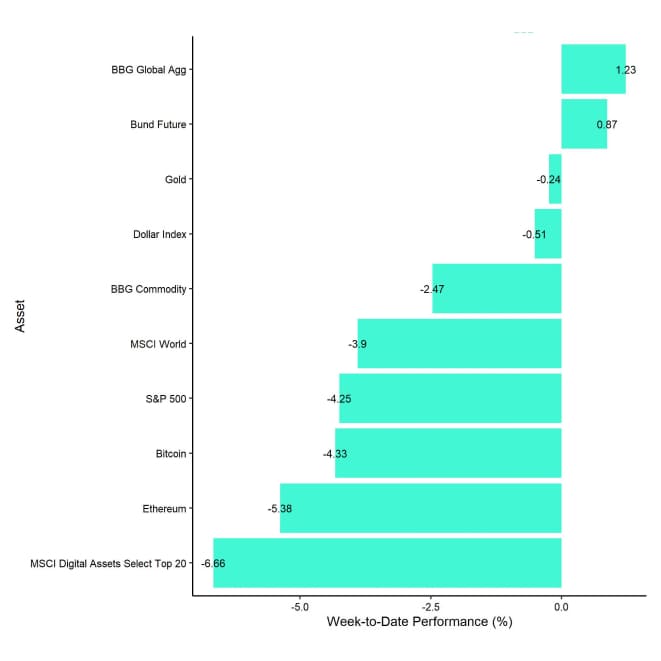
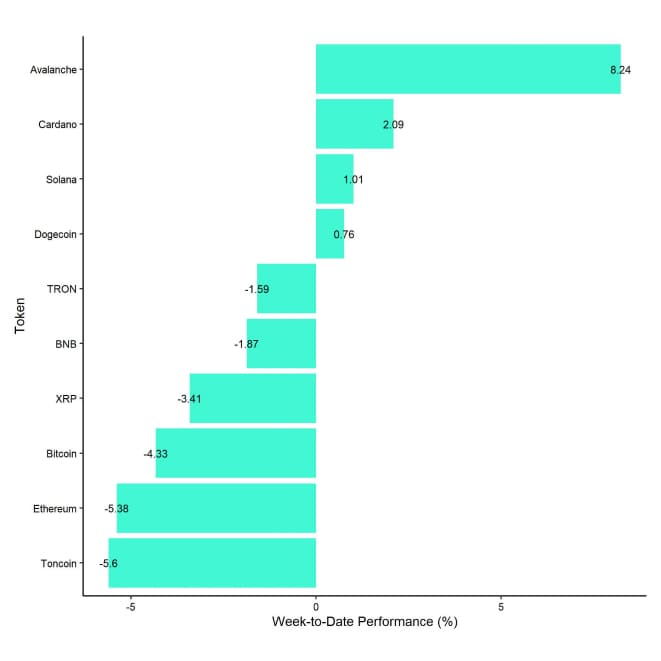
In general, among the top 10 crypto assets, Avalanche, Cardano, and Solana were the relative outperformers.
Overall, altcoin outperformance vis-à-vis Bitcoin surprisingly held up very well, with 90% of our tracked altcoins managing to outperform Bitcoin on a weekly basis.
Sentiment
Our in-house “Cryptoasset Sentiment Index” continues to signal a bearish level of sentiment.
At the moment, only 4 out of 15 indicators are above their short-term trend.
Last week, there were significant reversals to the downside in the BTC STH-NUPL and BTC Put-Call Volume Ratio.
The Crypto Fear & Greed Index currently signals a “Fear” level of sentiment as of this morning.
Performance dispersion among cryptoassets still remains at very low levels. This means that altcoins are still very much correlated with the performance of Bitcoin.
Altcoin outperformance vis-à-vis Bitcoin surprisingly reversed to the upside last week, with 90% of our tracked altcoins outperforming Bitcoin on a weekly basis. This was somewhat inconsistent with an ongoing underperformance of Ethereum vis-à-vis Bitcoin last week.
In general, increasing (decreasing) altcoin outperformance tends to be a sign of increasing (decreasing) risk appetite within cryptoasset markets and the latest altcoin outperformance could signal increasing risk appetite at the moment.
Meanwhile, sentiment in traditional financial markets as measured by our in-house measure of Cross Asset Risk Appetite (CARA) reversed to the downside again and currently signals bearish sentiment in traditional financial markets.
Fund Flows
Fund flows into global crypto ETPs were very weak last week.
Global crypto ETPs saw around -867.2 mn USD in net outflows across all types of cryptoassets which shows that net outflows have accelerated compared to prior the week's -265.0 mn USD in net outflows. Last week saw the 2nd highest net outflows from global crypto ETPs on record.
GlobalBitcoinETPs saw net outflows of -769.7 mn USD last week, of which -692.2 mn USD in net outflows were related to US spot Bitcoin ETFs alone.
Flows into the ETC Group Physical Bitcoin ETP (BTCE) positively defied market trends last week with net inflows equivalent to +3.9 mn USD and the ETC Group Core Bitcoin ETP (BTC1) saw neither in- nor outflows (+/- 0 mn USD).
The Grayscale Bitcoin Trust (GBTC) continued to see net outflows, with around -160.7 mn USD last week.
Meanwhile, globalEthereumETPs also continued to see net outflows last week of -116.3 mn USD. US Ethereum spot ETFs saw around -91.0 mn USD in net outflows in aggregate. However, this was again mostly related to continuing outflows from the Grayscale Ethereum Trust (ETHE) which experienced -111 mn USD in net outflows last week.
The ETC Group Physical Ethereum ETP (ZETH) experienced minor net outflows (-0.4 mn USD) while the ETC Group Ethereum Staking ETP (ET32) saw sticky AuM last week.
In contrast, Altcoin ETPs ex Ethereum continued to experience positive net flows of around +10.1 mn USD last week.
Besides, Thematic & basket crypto ETPs also saw continued net inflows with around +8.7 mn USD last week. The ETC Group MSCI Digital Assets Select 20 ETP (DA20) saw neither in- nor outflows last week (+/- 0 mn USD).
Meanwhile, global crypto hedge funds continued to reduce their market exposure somewhat last week. Global crypto hedge funds still remain slightly underweight to Bitcoin. The 20-days rolling beta of global crypto hedge funds' performance to Bitcoin decreased to around 0.83 per yesterday's close.
On-Chain Data
In general, major Bitcoin on-chain metrics have continued to be negative.
For instance, Bitcoin spot intraday net buying volumes have continued to be negative over the past week.
Over the 7 days, net selling volumes across BTC spot exchanges amounted to around -606 mn USD. On the bright side, these net selling volumes have gradually declined throughout September which implies increasing seller exhaustion.
Once again, last week's selling pressure appears to have emanated to a large extent from net outflows from US spot Bitcoin ETFs which have experienced -716 mn USD in net outflows over the past 4 trading days alone (September 2nd was a public holiday in the US).
Selling pressure also emanated from BTC whales who transferred 9,477 BTC to exchanges last week on a net basis. Whales are defined as network entities that control at least 1,000 BTC.
As a result, BTC on-exchange balances have also increased over the past week.
On a positive note, both the US government and the Mt Gox trustee remained on the sidelines and there were no distributions by these large entities. However, renewed distributions of these large holders still remain a risk for the market.
As far as Ethereum is concerned, a notable on-chain data point that somewhat weighed on market sentiment was another round of wallet transfers by the Ethereum Foundation and Vitalik Buterin. More specifically, the Ethereum Foundation distributed another 1k ETH while Vitalik's wallets showed some minor outbound transfers of around 100 ETH, according to data provided by Arkham.
Generally speaking, ETH mega-whales, i.e. those entities that control over 10k ETH, have been distributing their ETH holdings since July 2024 according to data provided by Glassnode. This could largely be due to ongoing net outflows from Grayscale's Ethereum Trust (ETHE).
Overall ETH exchange balances also increased last week consistent with an increase in selling pressure. However, overall ETH exchange balances still remain close to their multi-year lows according to Glassnode data.
Futures, Options & Perpetuals
Last week's developments show once again a build up in short positioning across BTC futures and perpetuals.
More specifically, both BTC futures and perpetual open interest increased by around +15k BTC and +10k BTC, respectively, amid declining prices. Meanwhile, long futures liquidations remained quite moderate last week.
In consequence, perpetual funding rates turned negative on Friday and Sunday signalling a build-up in short positioning. When the funding rate is positive (negative), long (short) positions periodically pay short (long) positions. A negative funding rate tends to be a sign of bearish sentiment in perpetual futures markets.
However, the basis rate remained mostly unchanged throughout last week and is currently around 7.3% p.a.
Besides, BTC option open interest increased last week and judging by the significant increase in put-call open interest ratios, this was mostly related to a relative build-up in BTC puts. This also hints at some level of seller exhaustion.
The 1-month 25-delta skews for BTC also increased somewhat and remained positive suggesting increasing relative demand for put options.
Furthermore, BTC option implied volatilities drifted up amid declining prices. At the time of writing, implied volatilities of 1-month ATM Bitcoin options are currently at around 56.8% p.a.
Bottom Line
- Last week, cryptoassets continued to underperform on account of heightened risk aversion due to ongoing US recession woes.
- Our in-house “Cryptoasset Sentiment Index” continues to signal a bearish level of sentiment.
- Macro: Major recession signals such as the Sahm Rule remain triggered and still imply an imminent US recession.
Appendix
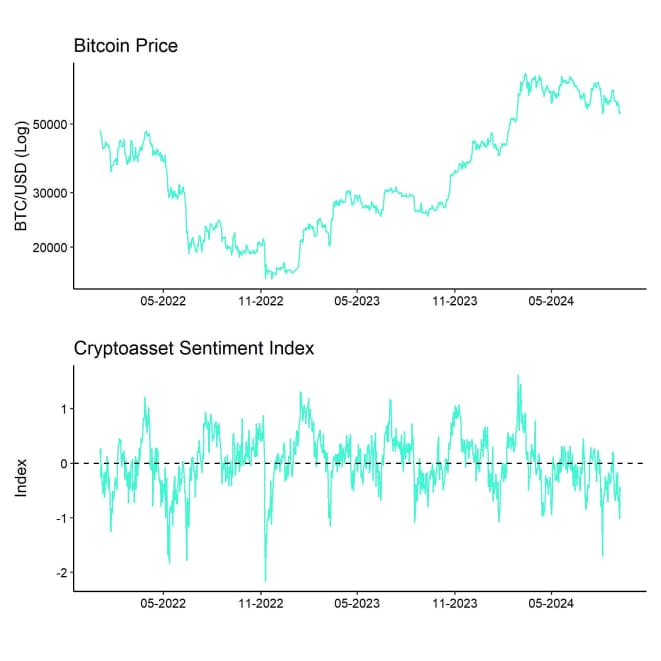


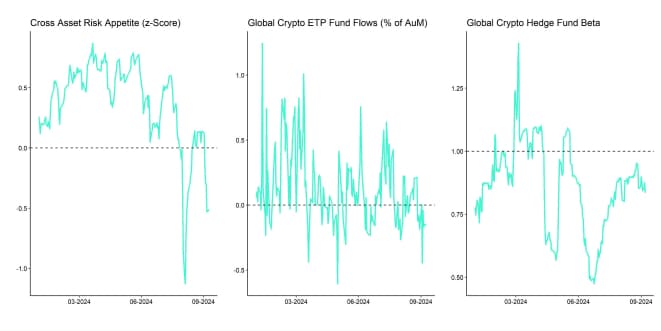
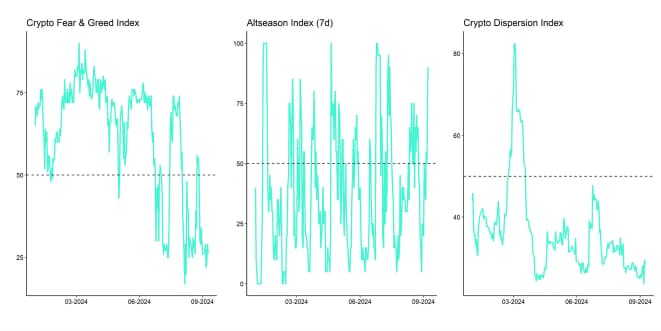

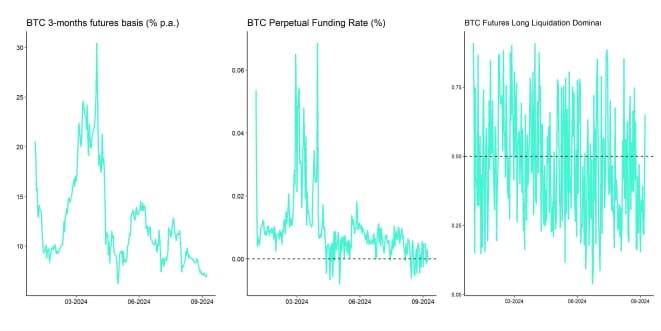
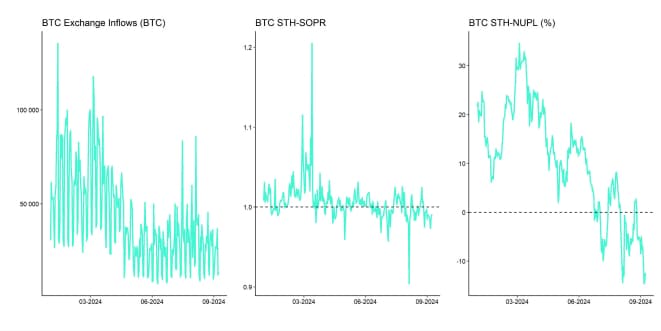
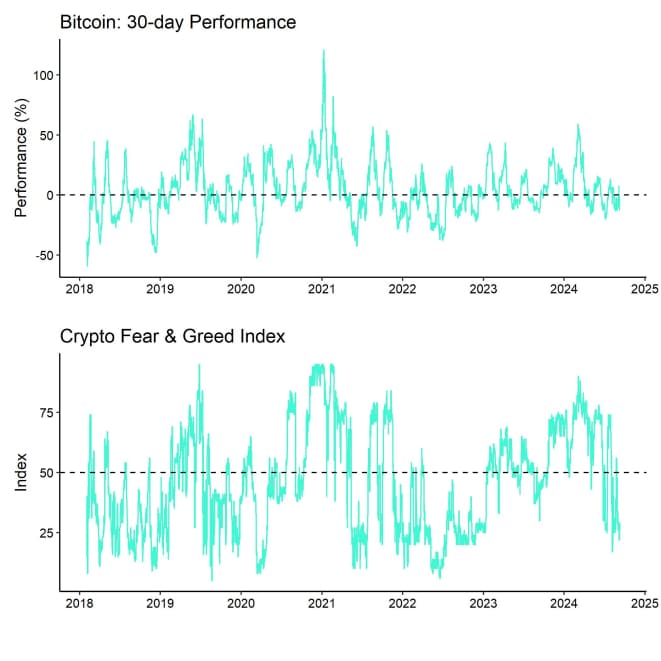
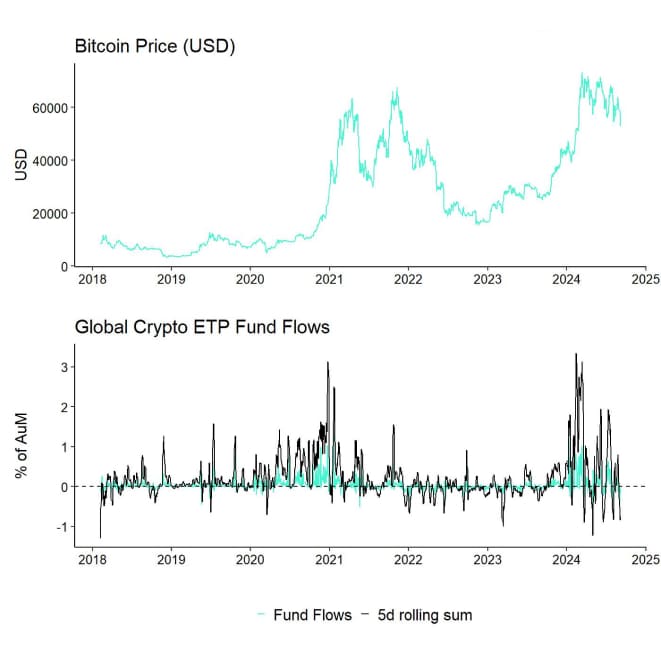
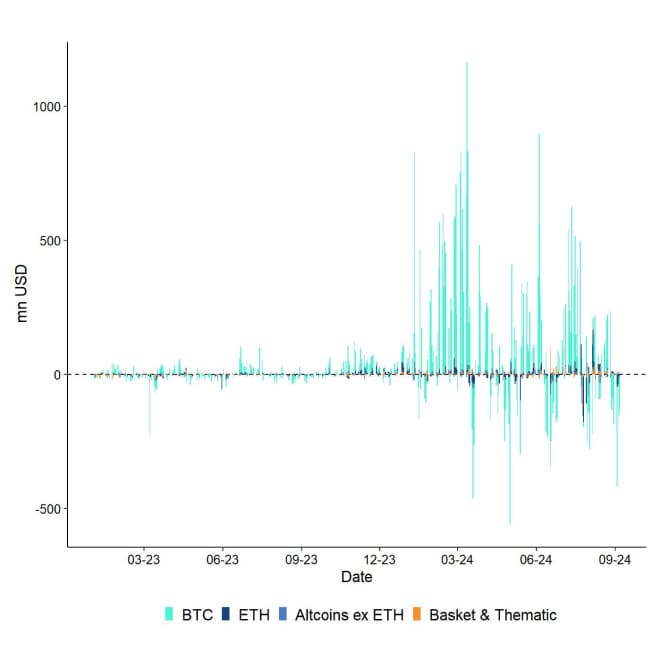
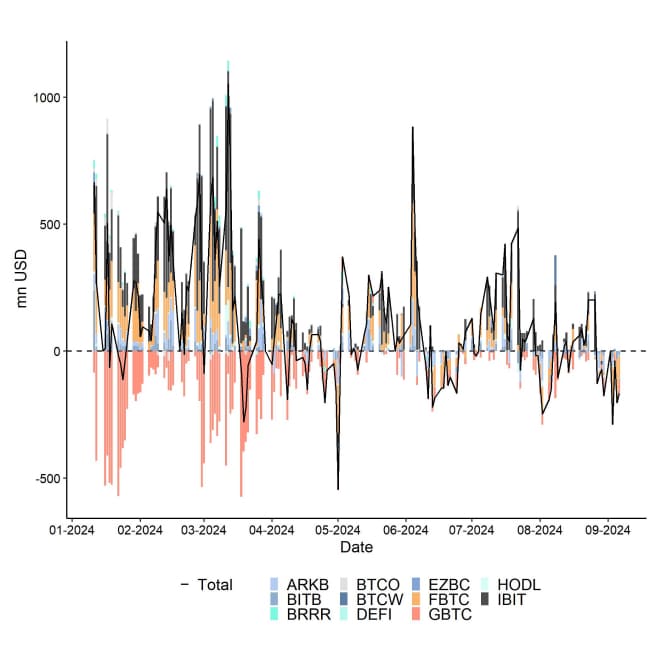
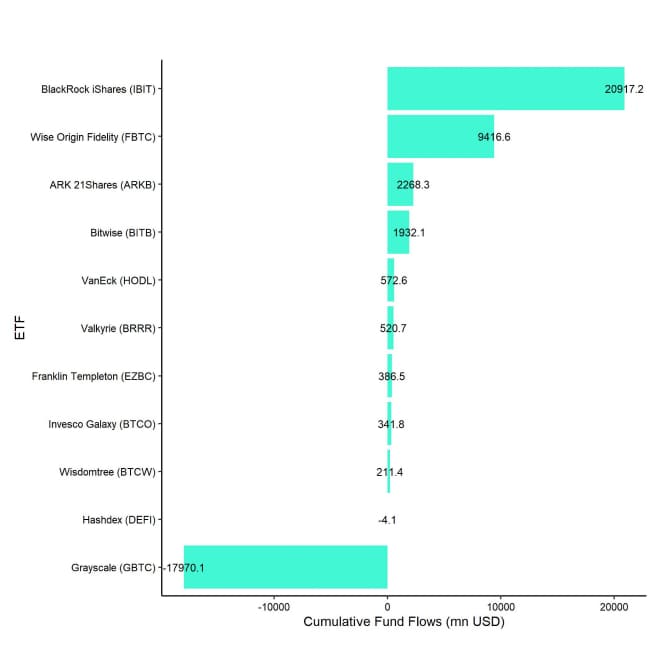
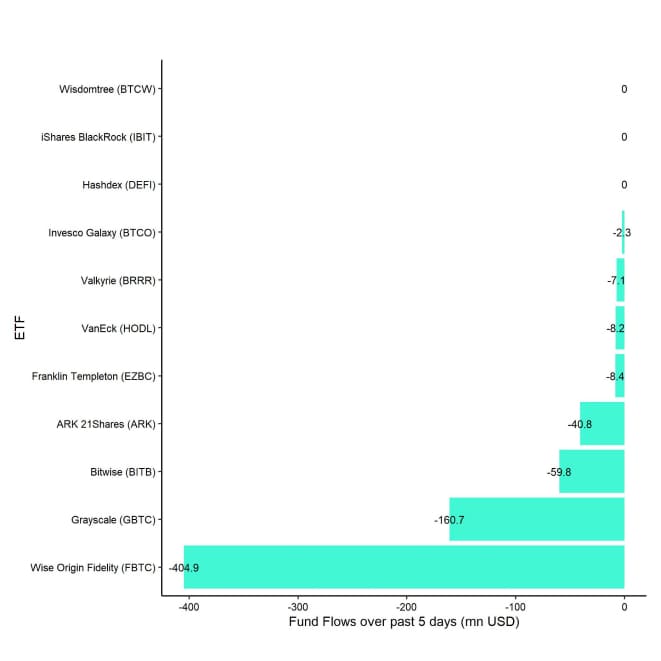
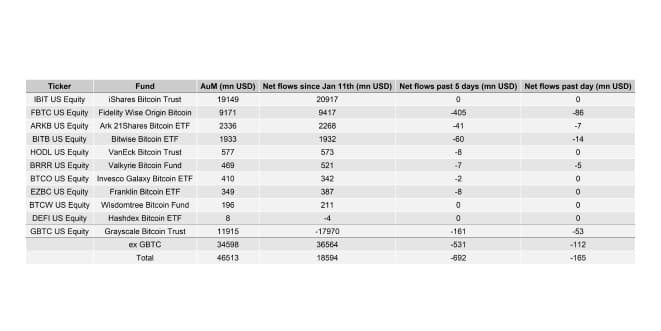
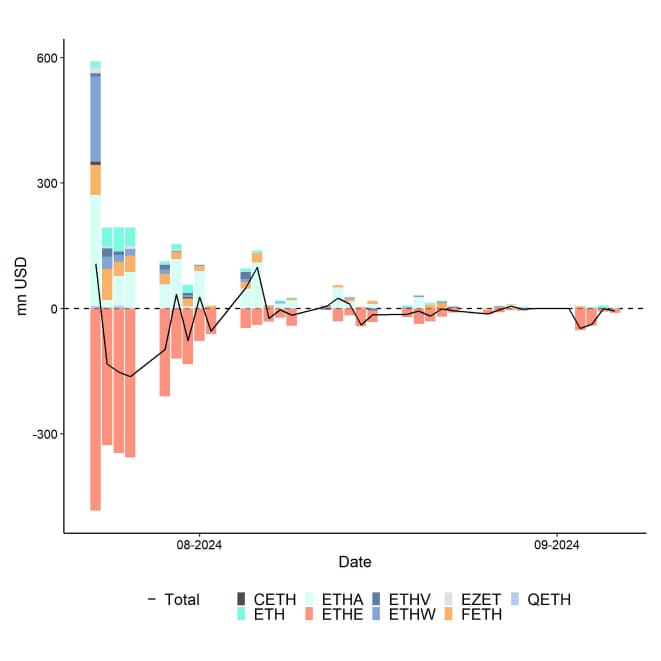
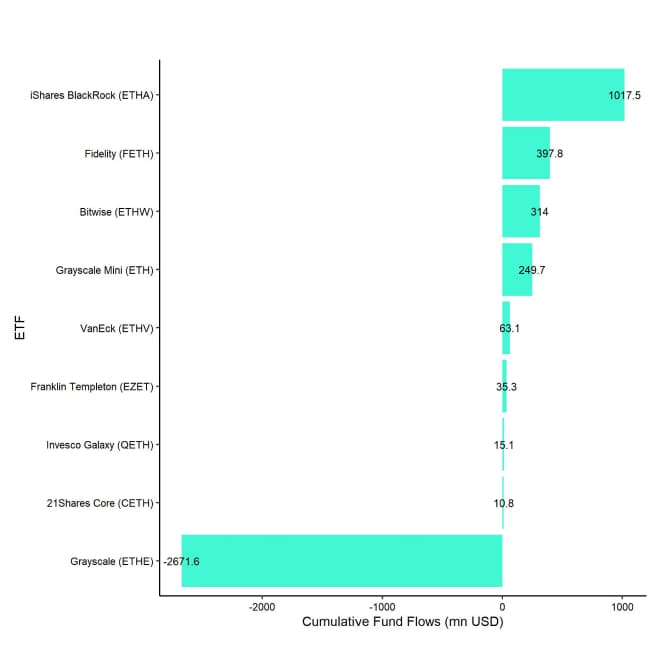

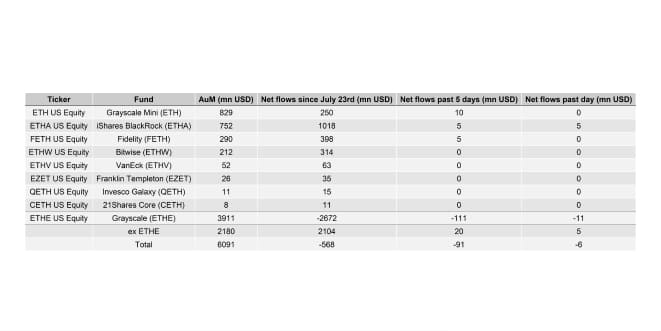
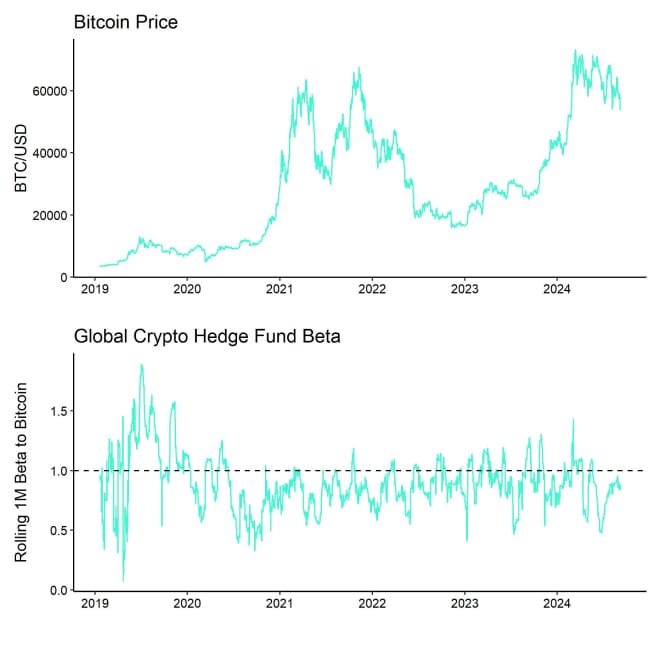
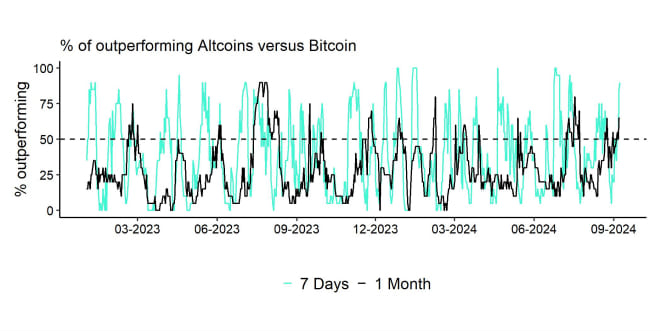
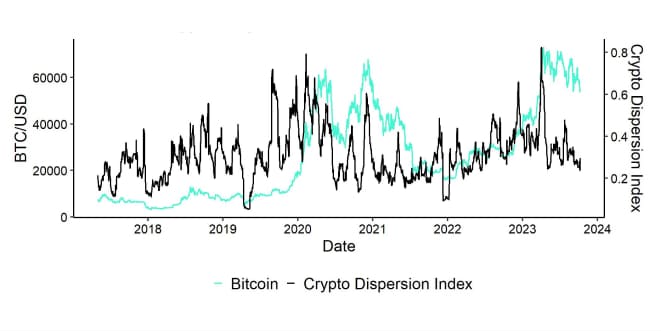
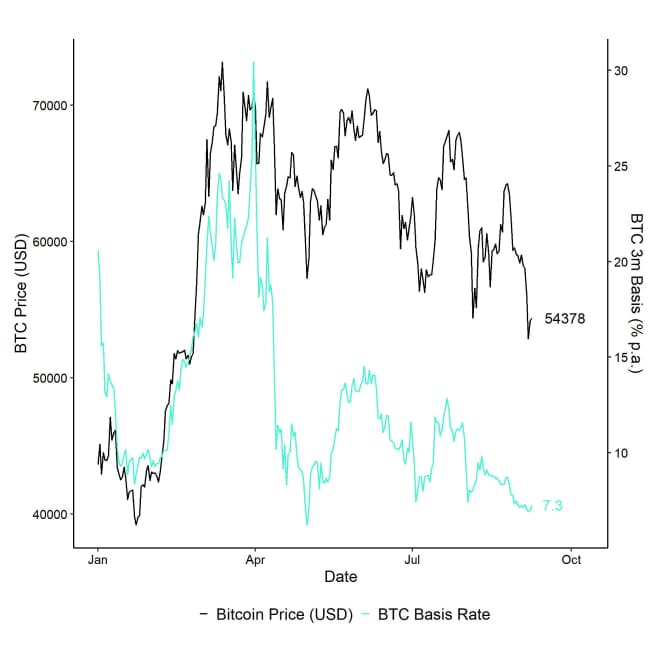
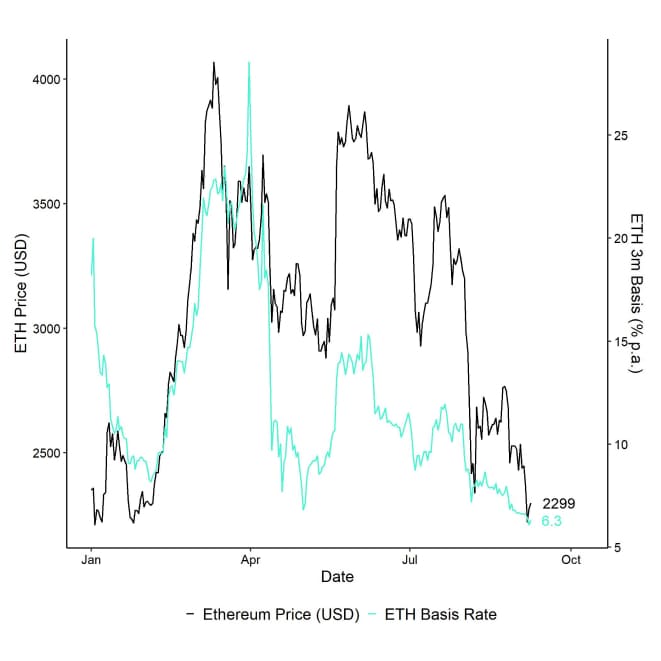
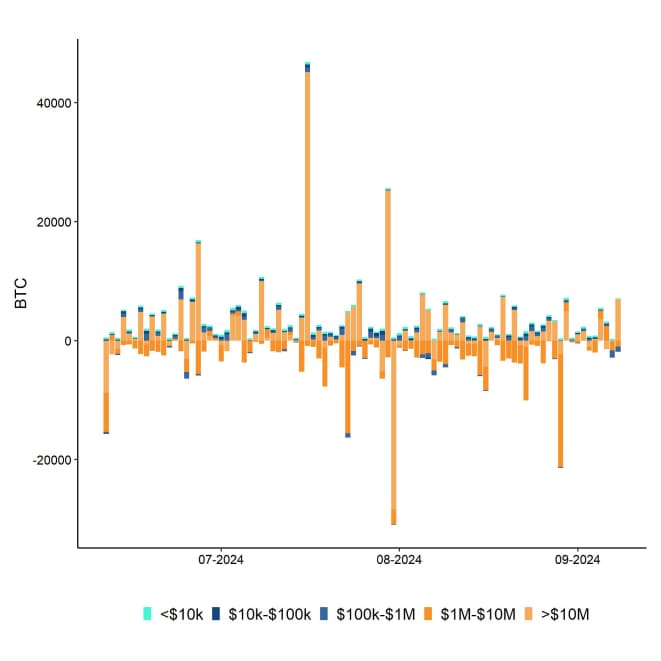
Important information:
This article does not constitute investment advice, nor does it constitute an offer or solicitation to buy financial products. This article is for general informational purposes only, and there is no explicit or implicit assurance or guarantee regarding the fairness, accuracy, completeness, or correctness of this article or the opinions contained therein. It is advised not to rely on the fairness, accuracy, completeness, or correctness of this article or the opinions contained therein. Please note that this article is neither investment advice nor an offer or solicitation to acquire financial products or cryptocurrencies.
Before investing in crypto ETPs, potentional investors should consider the following:
Potential investors should seek independent advice and consider relevant information contained in the base prospectus and the final terms for the ETPs, especially the risk factors mentioned therein. The invested capital is at risk, and losses up to the amount invested are possible. The product is subject to inherent counterparty risk with respect to the issuer of the ETPs and may incur losses up to a total loss if the issuer fails to fulfill its contractual obligations. The legal structure of ETPs is equivalent to that of a debt security. ETPs are treated like other securities.
 En
En  Fr
Fr  De
De 